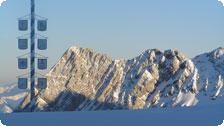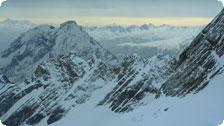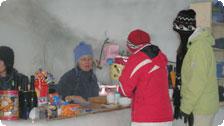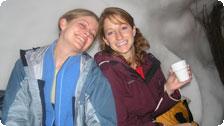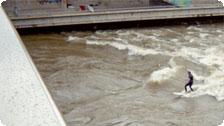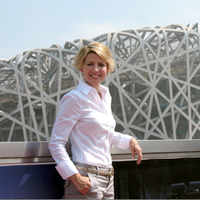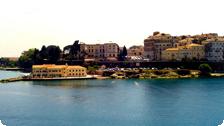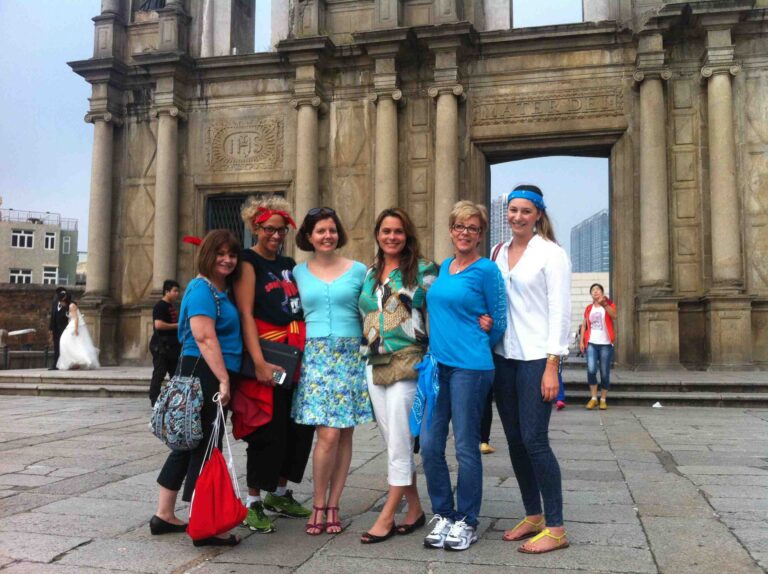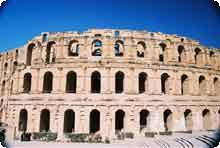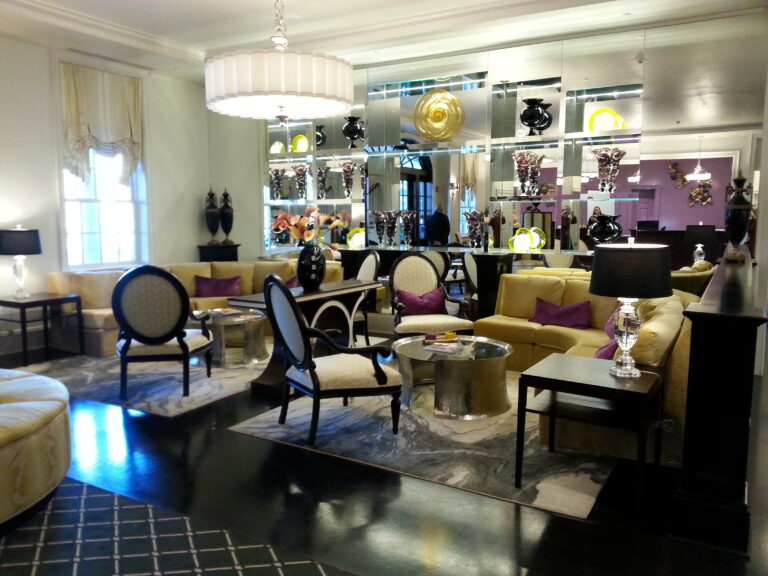Culture: Germany: An Inuit Igloo in the Bavarian Alps
by Jennifer L. Price
Towering above us at 9,724 ft (2,964 meters) was the Zugspitze, Germany’s tallest mountain. Although it was two in the afternoon and the sun was shining, it was April and the thermometer showed zero degrees. I looked at my two friends nervously. Are we really going to do this?
We stood waiting for the cable car with our backpacks filled with wool socks, long underwear and extra sweatshirts. Waiting for us at the peak was an igloo. A domed house made of snow with a bed of ice where we were going to spend the night.
I had done the research. Igloos first appeared in Canada and Greenland as temporary houses for Inuit hunters. They were warm, sturdy, and have long been a well-known symbol of life in colder climates.
Could I survive a night in one?
Open for the 2006/2007 season from December 25th to mid-April, Iglu-Dorf, Ltd. constructs igloo villages every winter atop the Zugspitze, located in Garmisch-Partenkirchen, Germany, and four other mountaintops in Switzerland, include Zermatt at the base of the famous Matterhorn.
For a reasonable price, anyone can spend the night in one of these igloo villages and experience the Alps in a whole new way.
My stomach did somersaults and my ears needed to pop as we climbed above Eibsee Lake and the surrounding Alps. Although most skiers and other sightseers descend from the glacier around 1600, those who have made the reservation to stay in the igloo stay at the seemingly deserted mountaintop and meet the helpful and friendly guides, who all speak some English.
After a brief safety demonstration, we made the short hike to our igloo carrying our special thermal sleeping bags and we were surprised at what we found. Not the domed building shaped by ice bricks as usually pictured, the igloo that we found was actually an ice maze built into a block of snow with a dining room, sleeping rooms, and a bathroom, coming off a hallway. Filled with wooden tables and ice benches covered in beige and brown sheepskins, the dining room also houses a bar where visitors first enjoy a warm welcome drink of spicy glühwein.
Later, guides ladened the tables with large breadbaskets, and we stuffed ourselves with a fondue dinner made with rich Gruyère cheese. For those who don’t like fondue, spaghetti is also available.
Our room was actually an ice cave carved into the snow with two candles for light. There were thick pads and soft sheepskins atop a large block of ice for us to sleep on. A hanging curtain separated the room from the hallway. Standard rooms generally sleep up to six people; so two different parties may share a room. We were fortunate enough to have the room to ourselves. Suites and romantic rooms are also available, which offer more privacy and include other extras, such as prosecco, but do cost more.
And, for those who are concerned, there is a special cave designated as the bathroom with a chemical toilet. Unfortunately, though, being in an igloo means that there isn’t a sink with running water to wash up or a place to take a shower.
The night started with a long seemingly difficult trek through the snow to a high point on the glacier. We rested, eating snow to hydrate ourselves and watched the sun slowly sink behind the Alps.
After dinner, we had a few choices for activities. There are playing cards and board games available in the dining room, some go for walks in the snow, and others enjoy some wine in their rooms, but we knew what we just “had” to do. We went to our room, grabbed our supplies and headed outside. We quickly changed in the special heated changing room and ran to the two whirlpool hot tubs that were waiting outside.
We sat in a hot tub on top of the tallest mountain in Germany, surrounded by snow, and a clear night sky with beautiful stars twinkling down. The stillness found just outside the igloo is amazingly peaceful—standing thousands of feet above the earth in a winter wonderland in complete silence.
Later, we snuggled into our insulated sleeping bags made for Arctic expeditions (still wearing our hats, scarves and gloves) for a good night’s sleep. Instead of the traditional wake-up call, we awoke to a cup of tea brought right to our sleeping bag. We stepped outside for a view of the bright sun rising above the mountains. The adventure ended with a trip down to the mountaintop restaurant for a traditional German breakfast of cold cuts, cheeses and breads. For those ready for more adventure, they can get an early start to skiing.
Some may think it’s crazy to pay money to spend the night in a building made of snow and ice when the thermometer reads zero, but the opportunity to stay in such a one-of-a-kind hotel in Germany or Switzerland is hard to pass up.
For your own unique evening in an igloo, visit www.iglu-dorf.com for more information on available dates and prices.
Discover more from Tango Diva
Subscribe to get the latest posts sent to your email.
